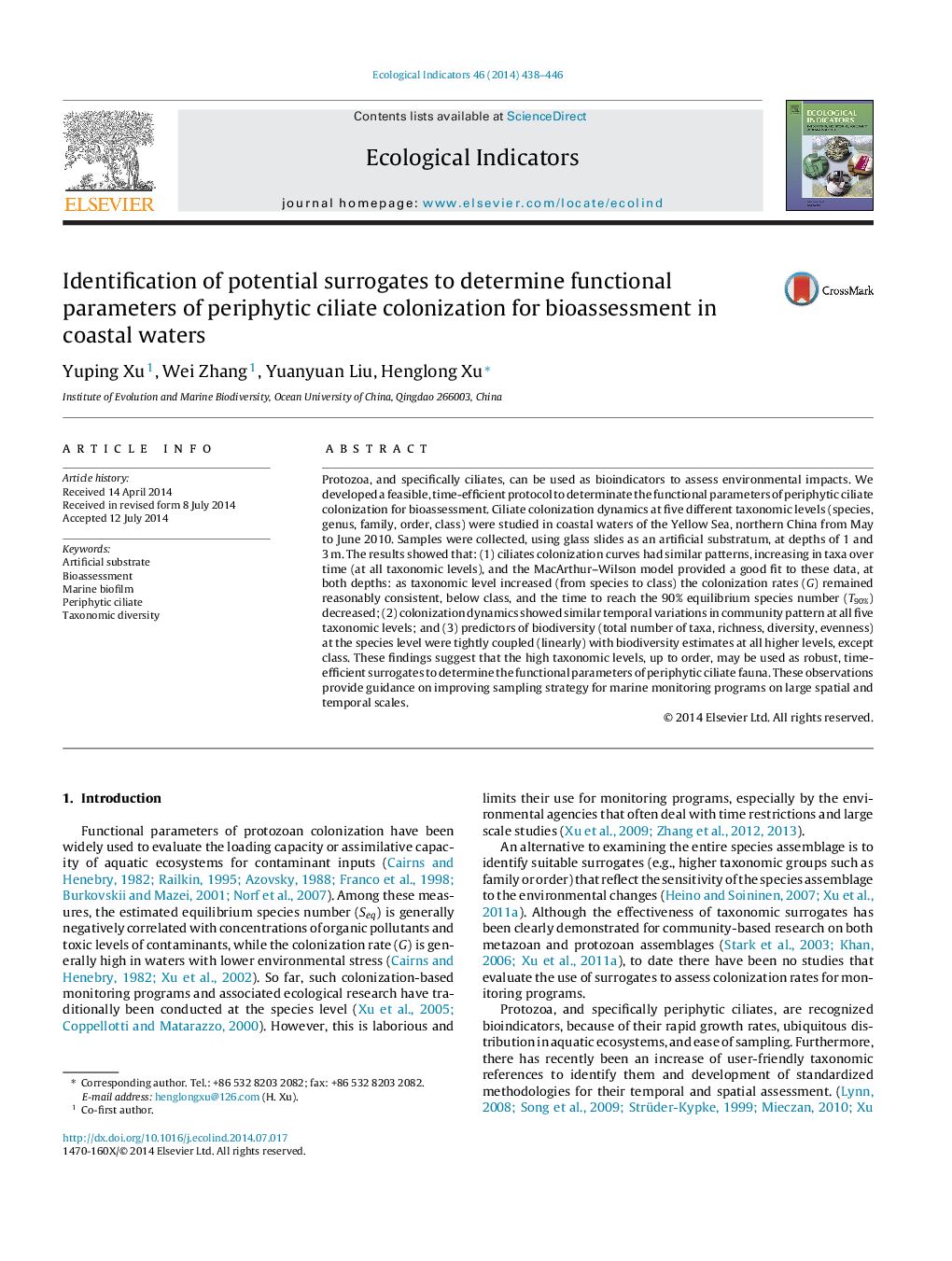| Article ID | Journal | Published Year | Pages | File Type |
|---|---|---|---|---|
| 6294917 | Ecological Indicators | 2014 | 9 Pages |
Abstract
Protozoa, and specifically ciliates, can be used as bioindicators to assess environmental impacts. We developed a feasible, time-efficient protocol to determinate the functional parameters of periphytic ciliate colonization for bioassessment. Ciliate colonization dynamics at five different taxonomic levels (species, genus, family, order, class) were studied in coastal waters of the Yellow Sea, northern China from May to June 2010. Samples were collected, using glass slides as an artificial substratum, at depths of 1 and 3Â m. The results showed that: (1) ciliates colonization curves had similar patterns, increasing in taxa over time (at all taxonomic levels), and the MacArthur-Wilson model provided a good fit to these data, at both depths: as taxonomic level increased (from species to class) the colonization rates (G) remained reasonably consistent, below class, and the time to reach the 90% equilibrium species number (T90%) decreased; (2) colonization dynamics showed similar temporal variations in community pattern at all five taxonomic levels; and (3) predictors of biodiversity (total number of taxa, richness, diversity, evenness) at the species level were tightly coupled (linearly) with biodiversity estimates at all higher levels, except class. These findings suggest that the high taxonomic levels, up to order, may be used as robust, time-efficient surrogates to determine the functional parameters of periphytic ciliate fauna. These observations provide guidance on improving sampling strategy for marine monitoring programs on large spatial and temporal scales.
Related Topics
Life Sciences
Agricultural and Biological Sciences
Ecology, Evolution, Behavior and Systematics
Authors
Yuping Xu, Wei Zhang, Yuanyuan Liu, Henglong Xu,
